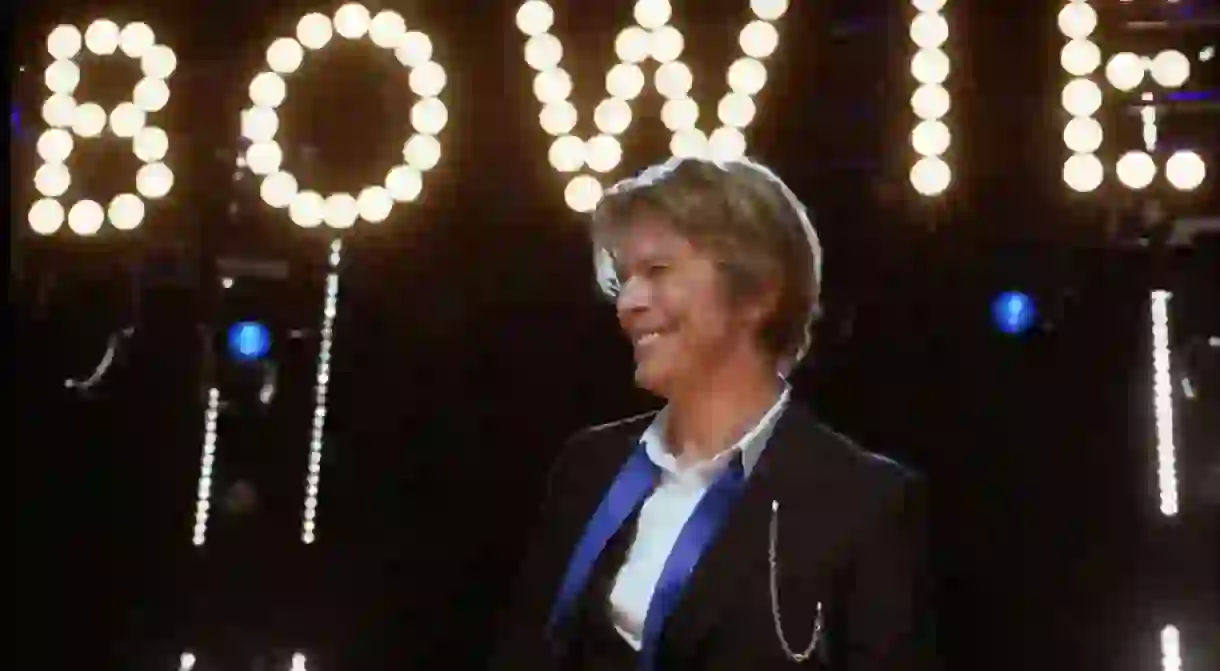A Guide To David Bowie’s Berlin

To his fans, it is no secret that Berlin played an important role in David Bowie’s career. Recalled fondly as ‘the Berlin years’, Bowie spent 1976-1979 living in the city. The ways that this place inspired his work and impacted him personally are nothing short of magical. The spirit of Bowie is also felt in Berlin, a city that evolved and changed through the last several decades at least as much as the singer himself. Here are Bowie’s favorite haunts, many of which can still be visited today.
Why he came
Before we delve into the specifics, a bit of background on Bowie’s coming to Berlin is due. At this point in his career, the singer was heavily immersed in the drug and party scene in his former home of Los Angeles. After a series of controversial public appearances where he was barely coherent, Bowie realized that he needed to separate himself from the rock and roll lifestyle he was living. Infatuated with the Komische music emerging in Germany at the time, Bowie ultimately moved to Berlin where he lived with his good friend, Iggy Pop. The best part about his initial arrival in the city was that he was barely known there.
http://instagram.com/p/BKgCKIng6IT/?tagged=davidbowie
Where he lived
Despite their statuses as music royalty, Bowie and Iggy lived pretty average lives in Berlin. Their apartment was located in the district of Schöneberg in West Berlin, where Berlin’s notorious gay neighborhoods are situated. His address, Hauptstrasse 155, was selected based on the area’s ‘bleak, anonymous and culturally lost’ vibe. Did we mention he was trying to escape his life as a famous pop star? Iggy was Bowie’s flatmate and was known for making a mess of the apartment and particularly for raiding his fridge. After his death, the exterior of his apartment was adorned with flowers and other mementos. In August 2016, it was also outfitted with a plaque commemorating Bowie’s time there.

Where he recorded
One of the reasons ‘the Berlin years’ live on in notoriety is because of Bowie’s ability to clean up his act and acquire the inspiration for the ‘Berlin Trilogy’ of albums, which include Low, Heroes, and Lodger. While only Heroes was recorded in its entirety during Bowie’s time in the city, each album is undeniably influenced by his experiences here. Hansa was the studio where Bowie worked and recorded in Berlin. In addition to creating his own solo stuff, he also collaborated with Brian Eno and helped Iggy transition into his solo career after leaving his band, The Stooges.
Hansa was famously situated right next to the Berlin Wall, which gave the recordings an ubiquitous feeling of tension, as they were under constant surveillance from the guards on the other side of the wall. It was this climate that spawned the famous lyrics, ‘I can remember, standing by the wall. The guns shot above our heads, and we kissed as though nothing could fall’ in the song Heroes. Here, Bowie was inspired when he witnessed the private embrace of his producer Tony Visconti and co-vocalist Antonia Maass beneath the watchful eyes of the guards.

Where he hung out
Bowie truly relished in his incognito presence around the city. He and Iggy frequented a myriad of different bars, museums, and art galleries during their time here. They were particularly well known for their visits to the Brücke Museum, where some believe Bowie gained visual inspiration through the amazing artwork and exhibitions displayed there.
While he shook much of his party lifestyle during his Berlin years, he was known to enjoy a few of West Berlin’s night clubs and haunts, including the Anderes Ufer, a gay-friendly bar that has since been renamed Neues Ufer. He was also known to enjoy evenings at the club SO36 in Kreuzberg. Both of these spots are still in operation today.

While it is now converted into the Ellington Hotel, Dschungel on Nürnberger Strasse in Charlottenburg was another common hangout for Bowie, so a stroll down this street would likely mean quite literally walking in his footsteps. Another famous story about Bowie’s anonymous gallivanting through the city came when he performed some Sinatra on the stage in Dschungel and the unruly crowd asked him to stop, having no idea who he was.
For eating, Bowie and Iggy were seen from time to time at the ritzy Paris Bar on Kantstrasse, which is still in operation today. After all, these two men weren’t exactly broke.
Performance in front of the Reichstag
While Bowie wasn’t known to simply hang out around the Reichstag during the years he lived there, his famous and politically impactful 1987 performance in Berlin was held here. The stage was situated right at the edge of the Western side of the Wall, and thousands from the East gathered on the other side to listen, something that the German Democratic Republic considered to be an act of political insubordination as Western music was forbidden. This deeply moved Bowie, particularly when he performed Heroes, a song whose lyrics are about a couple’s love transcending the wall’s barrier. This event spurred riots in the East on the following night and had a major role in changing public perception about the divide between East and West Berlin on an international scale.
https://www.youtube.com/watch?v=0C7FlnBt1q4
Just when people thought that the Berlin years were far behind him, Bowie released his popular single in 2013 titled Where Are We Now, which is laced with references to the city as he considers the ways it has changed, as a symbolic platform for reflecting on the passage of time. Bowie’s years in Berlin are still deeply felt in the city, as each influenced the other in tremendous ways. When he passed away, the German Foreign Office tweeted, ‘Good-bye, David Bowie. You are now among Heroes. Thank you for helping to bring down the wall.’













